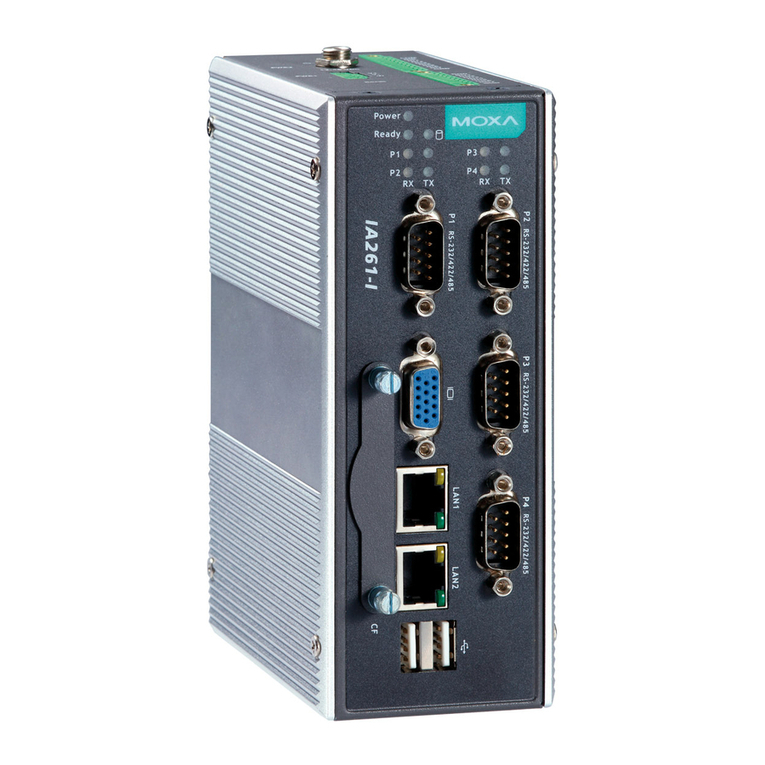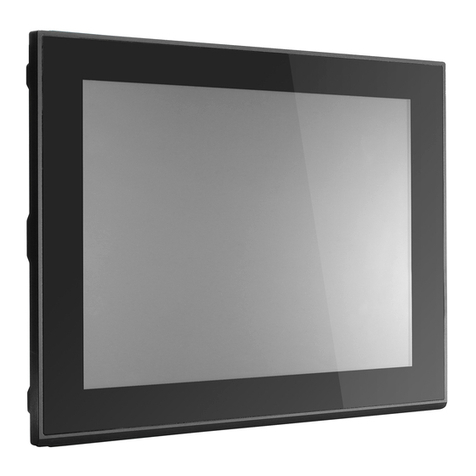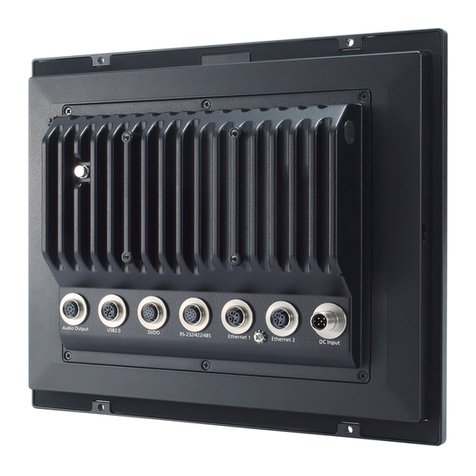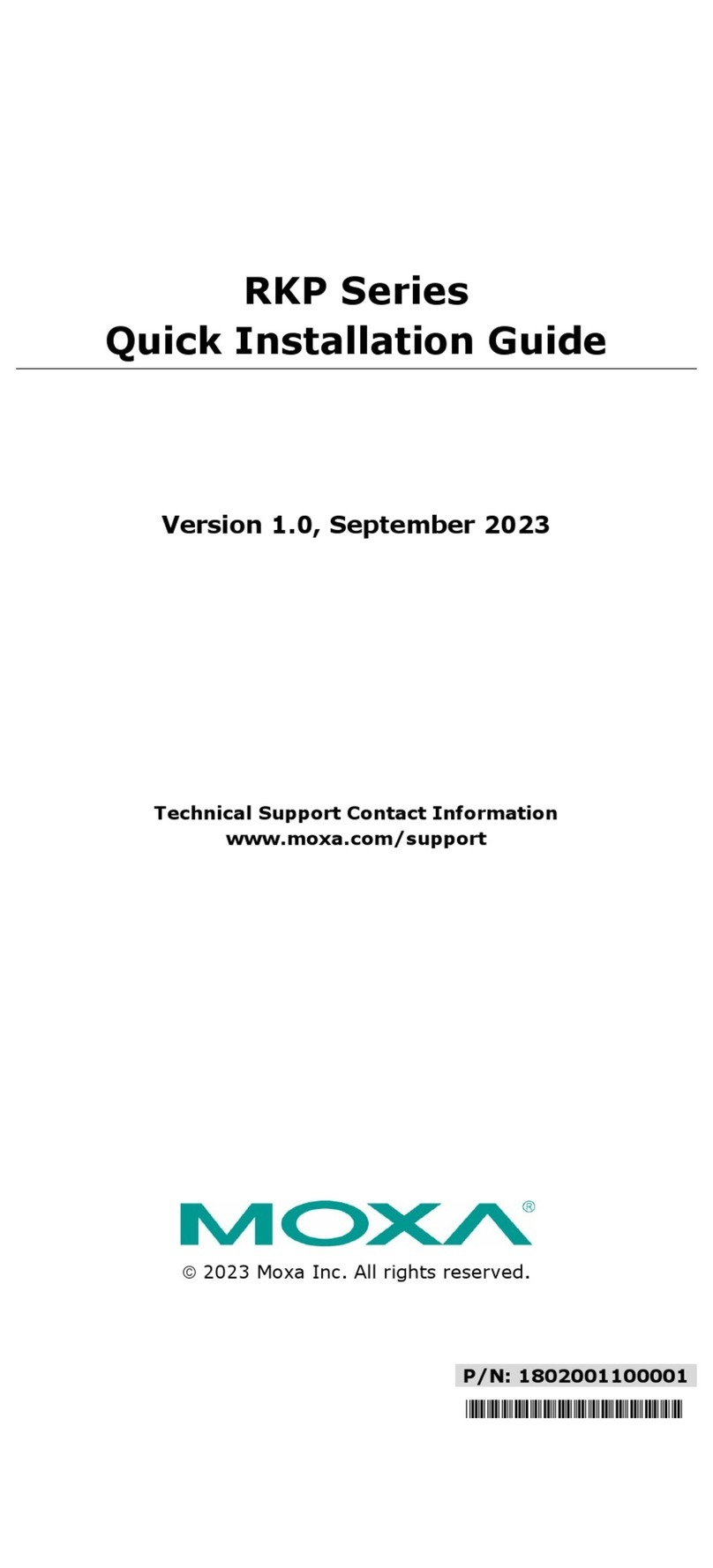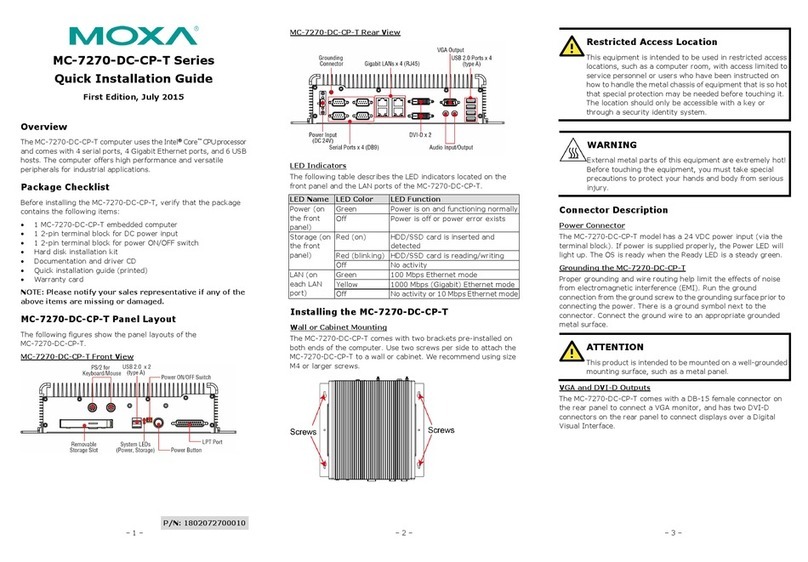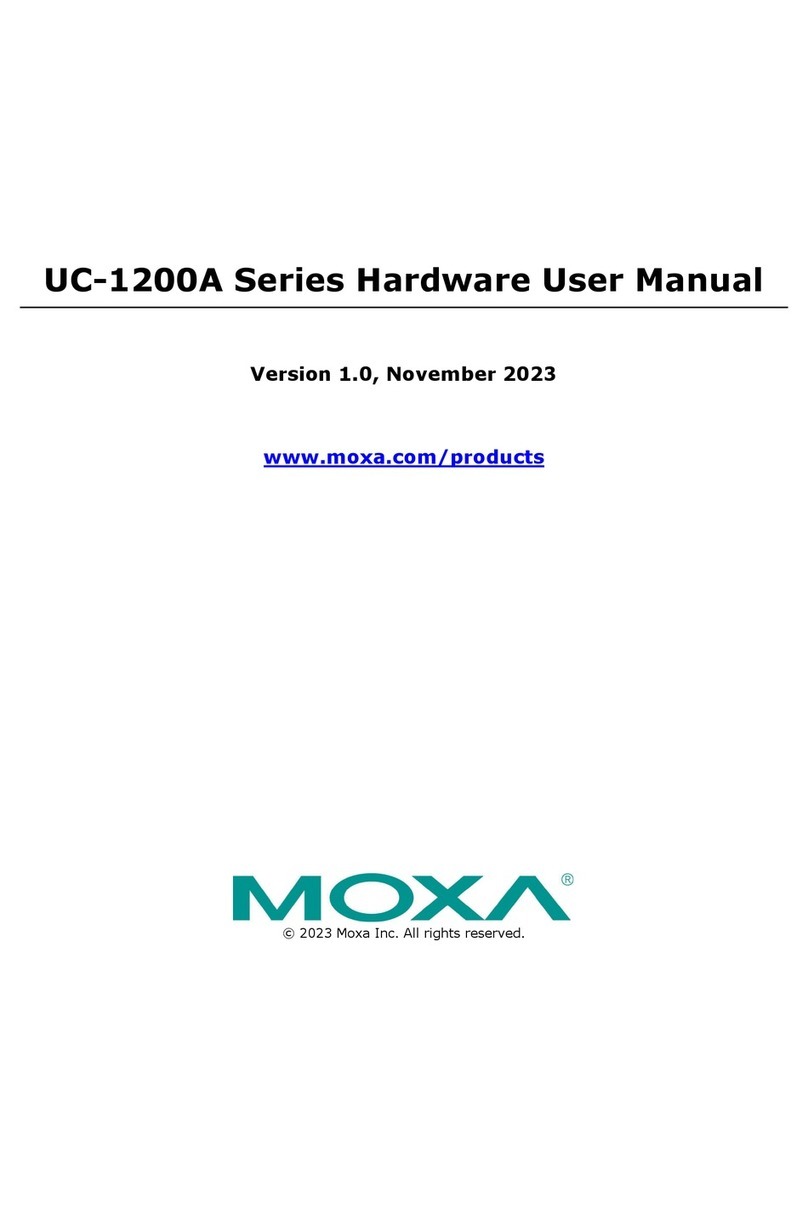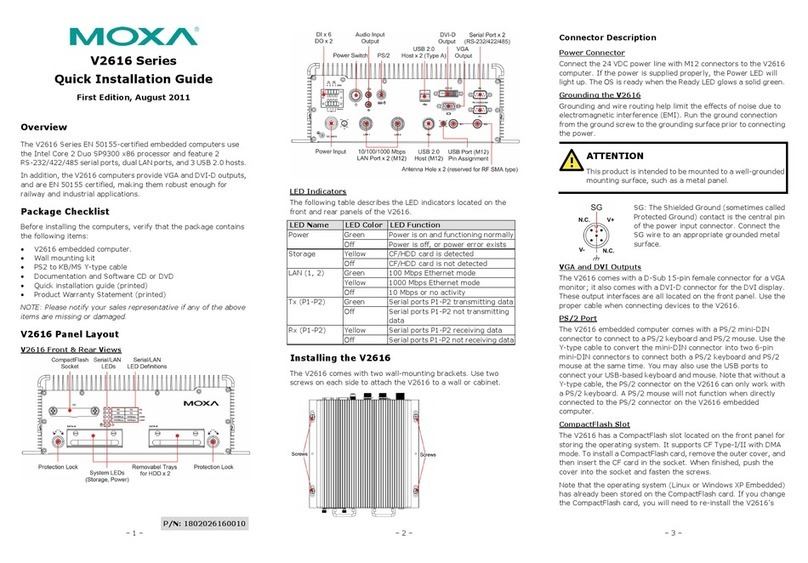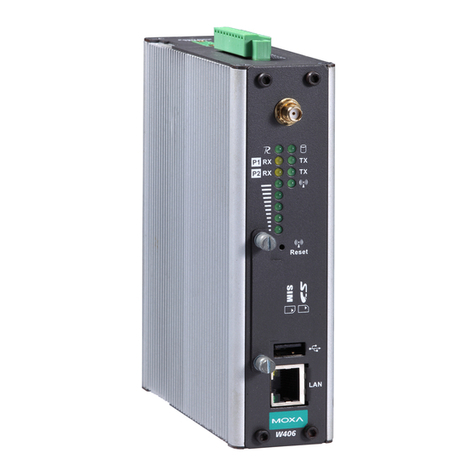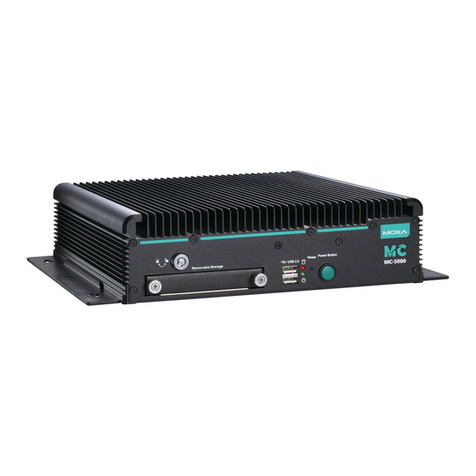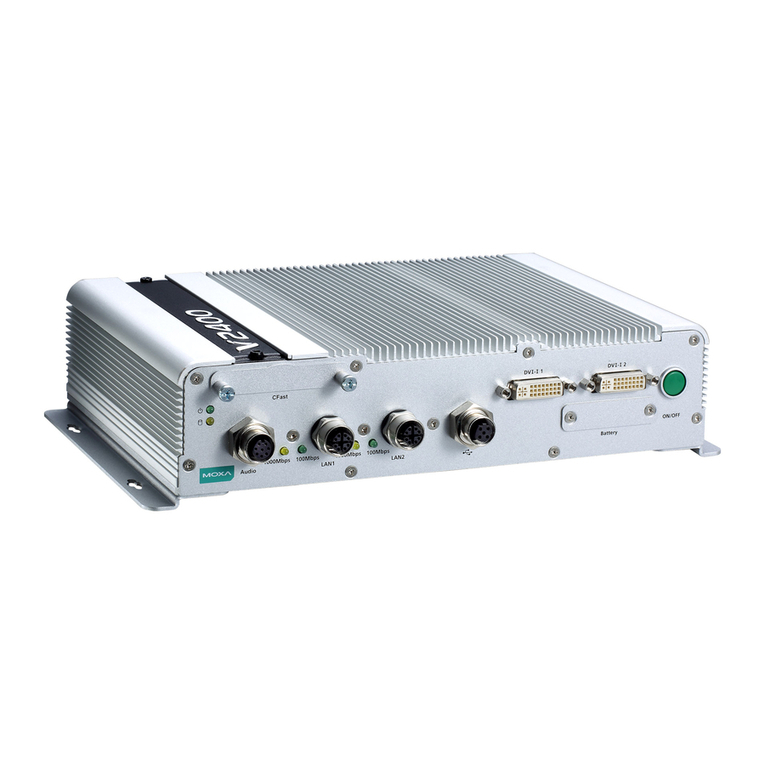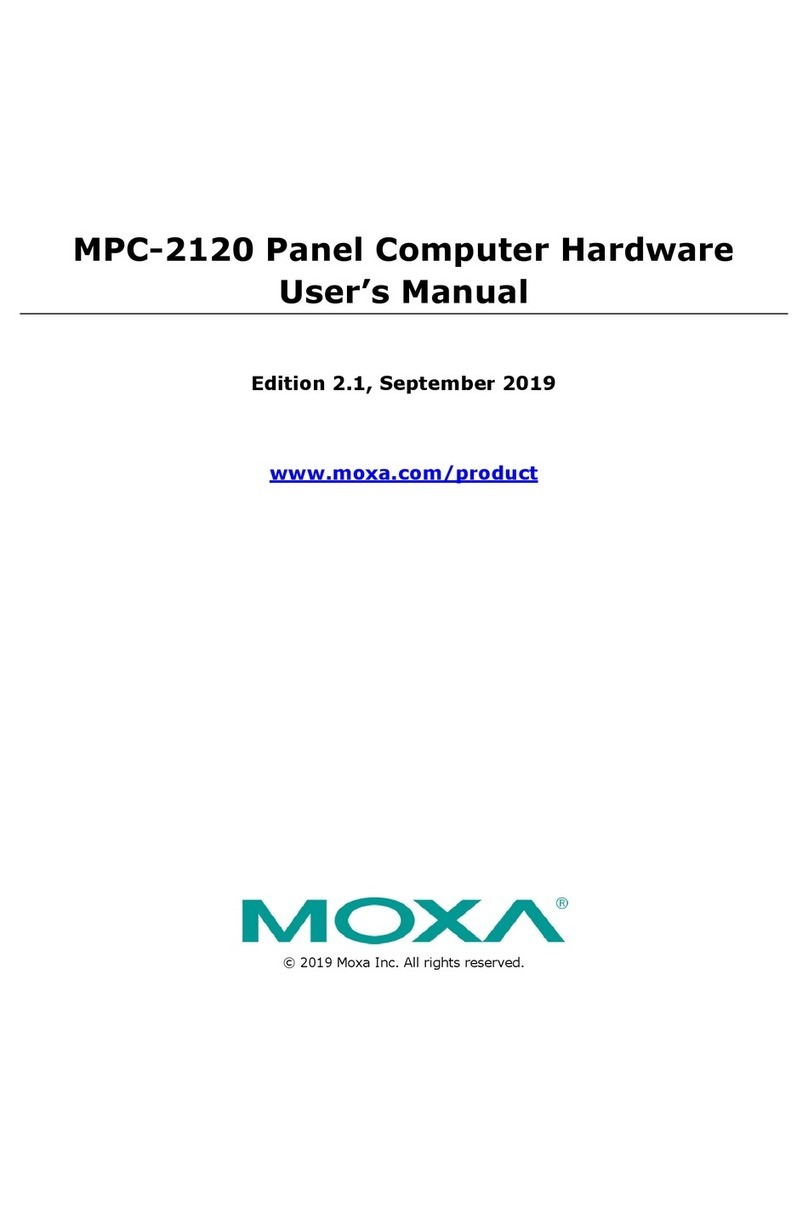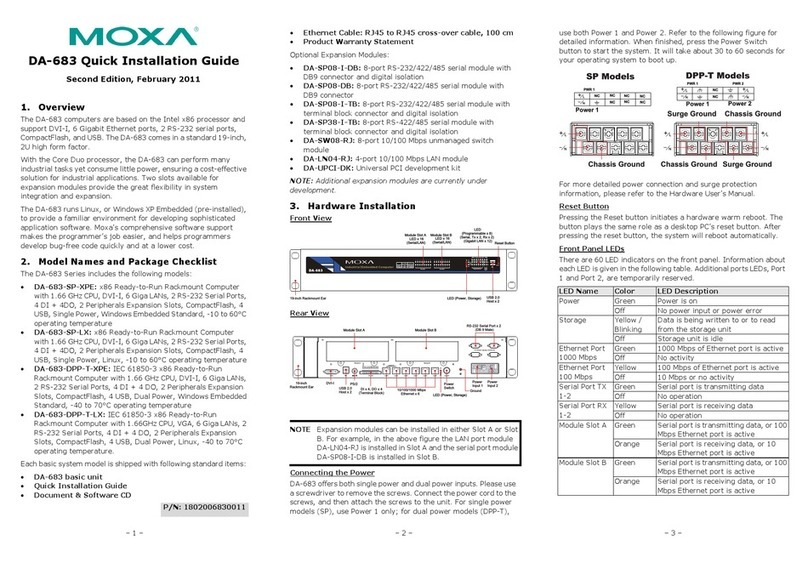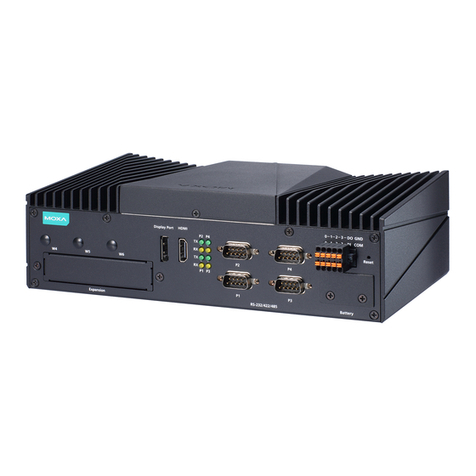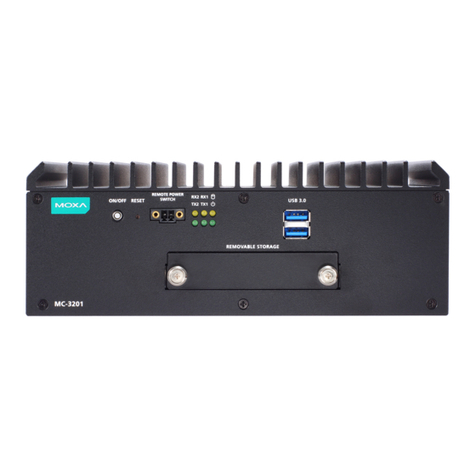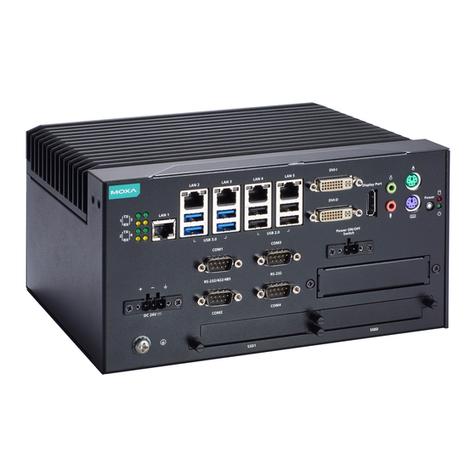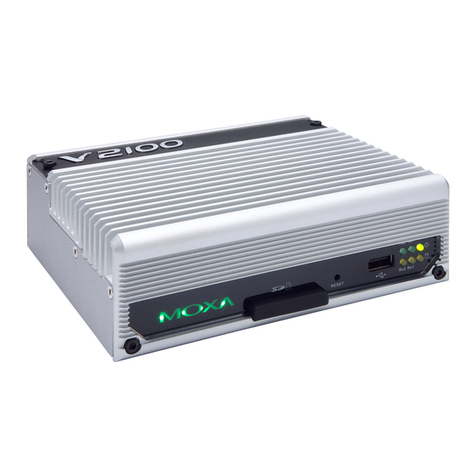
UC-7122/7124 User’s Manual Introduction
Memory and File Systems
The 32 MB of SDRAM is divided into two main parts. The main memory, which houses the
operating system and user applications, has a capacity of about 20 MB. The kernel image occupies
the remainder of the memory space.
RAM File System
The internal file system in the UC-7122/7124 computer controls access to flash and also provides
file storage in the object store, which is in the RAM. The root directory is a RAM file system of
size 4 MB. Child directories such as “Windows,” “Temp,” “My Documents,” “Network,” and
“Program Files” are under the root directory. They can be used for storing temporary files for your
applications. However, do not place persistent files or applications in these directories because
they will be deleted when the system is shut down. Instead, place them in the “NORFlash”
directory.
Flash File System
The Flash file system provides persistent storage for applications and related data, even when the
main power supply is lost. The system integrates the read-only files that are stored on the Flash
with the read/write files from both applications and users. A child directory named “NORFlash” is
created under the root; the size of the directory is 8 MB.
External File System
The additional file systems from USB and SD storage devices are placed in the root of the internal
file system. If you intend to use these devices to port data between your PC and the UC-7122/7124
computer, you should format them using the FAT file system on your PC.
Cautions when Using File Systems
We recommend storing your programs only in the on-board NOR Flash. Please store the log data
generated by your programs in an external storage device such as an SD card or Network File
System. Note that a Network File System will generally provide more storage space than the SD
card. In addition, it is easier to replace a full or damaged Compact Flash than an on-board NOR
Flash.
A NOR Flash has a life cycle of 100,000 write operations in block (128 KB) level, and does not
support BBM (Bad Block Management). For this reason, the FAT file system would not know
when a flash block has reached its cycle, and would try to scan the block repeatedly.
FAT sequentially searches for free memory space for write operations. After deleting many files,
the memory space could become fragmented, making it more difficult to search for free space. If
your program updates (deletes and then creates) a file frequently, it is quite possible that the
program writes data to the same flash area. In the long run, FAT would be blocked when scanning
the area and would cause the operating system to hang.
An SD card has its own life cycle. Since most SD cards are made from a NAND Flash, their
hardware controllers implement BBM. This feature allows FAT to skip bad blocks if they exist.
Furthermore, the memory space of an SD card is much larger than that of the NOR Flash. Using
this space cautiously will ensure that its life cycle is not exceeded. When creating a file for storing
log data, we suggest creating a large empty file (e.g., 30 MB), and then writing data evenly to that
space. When the space is used up, the program rewinds the write operations. As a result, the
number of write operations to each block is reduced.
1-6

